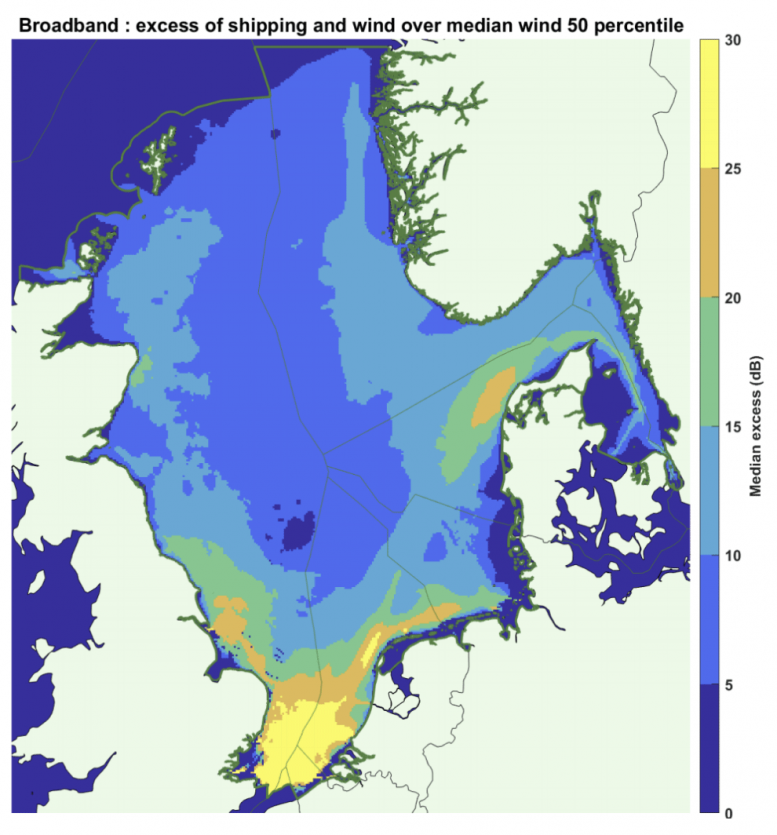
This map from the IQOE-endorsed JOMOPANS project shows the difference between the total noise level and the natural noise level with differences up to 30 decibels (dB). The underwater noise was measured at 15 locations across the North Sea for a year. Shipping noise dominates human additions of noise in the North Sea. While 30 dB on its own is not loud, the superimposition raises the level significantly higher than natural noise. Credit: JOMOPANS
Amid COVID pause in marine activities, growing network aims to monitor soundscapes, assess changes in behavior of marine life; More than 200 widely-distributed non-military hydrophones already listening.
Travel and economic slowdowns due to the COVID-19 pandemic combined to put the brakes on shipping, seafloor exploration, and many other human activities in the ocean, creating a unique moment to begin a time-series study of the impacts of sound on marine life.
A community of scientists has identified more than 200 non-military ocean hydrophones worldwide and hopes to make the most of the unprecedented opportunity to pool their recorded data into the 2020 quiet ocean assessment and to help monitor the ocean soundscape long into the future. They aim for a total of 500 hydrophones capturing the signals of whales and other marine life while assessing the racket levels of human activity.
Combined with other sea life monitoring tools and methods such as animal tagging, the work will help reveal the extent to which noise in “the Anthropocene seas” impacts ocean species.
Sound travels far in the ocean, and a hydrophone can pick up low-frequency signals from hundreds, even thousands of kilometers away. The highest concentrations of non-military hydrophones are along the North American coasts — Atlantic, Pacific, and Arctic — Hawaii, Europe, and Antarctica, with some scattered through the Asia-Pacific region.
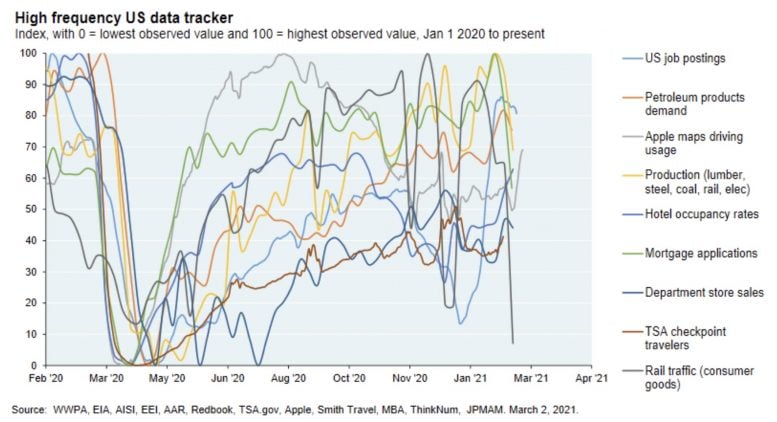
Data graphed by JP Morgan reveals the impact of COVID in several categories of commercial activity. If true also of maritime activity as suspected, it suggests a relatively short-lived quiet ocean due to COVID — late March to mid-May, 2020. Credit: JP Morgan
For over a century, navies have used sound to reveal submarines and underwater mines and for other national security purposes. Marine animals likewise use sound and natural sonar to navigate and communicate across the ocean.
But the effects of human-generated ocean sounds on marine life remain poorly understood.
“Measuring variability and change in ambient, or background, ocean sound over time forms the basis for characterizing marine ‘soundscapes,'” says collaborator Peter L. Tyack, Professor of Marine Mammal Biology at the University of St Andrews, Scotland.
“Assessing the risks of underwater sound for marine life requires understanding what sound levels cause harmful effects and where in the ocean vulnerable animals may be exposed to sound exceeding these levels. Sparse, sporadic deployment of hydrophones and obstacles to integrating the measurements that are made have narrowly limited what we confidently know.”
In 2011, concerned experts began developing the International Quiet Ocean Experiment (IQOE), launched in 2015 with the International Quiet Ocean Experiment Science Plan. Among their goals: create a time series of measurements of ambient sound in many ocean locations to reveal variability and changes in intensity and other properties of sound at a range of frequencies.
The plan also included designating 2022 “the Year of the Quiet Ocean.”

In 2011, concerned experts began developing the International Quiet Ocean Experiment (IQOE), launched in 2015 with the International Quiet Ocean Experiment Science Plan. Among their goals: create a time series of measurements of ambient sound in many ocean locations to reveal variability and changes in intensity and other properties of sound at a range of frequencies. Credit: IQOE
Due to COVID-19, however, “the oceans are unlikely to be as quiet as during April 2020 for many decades to come,” says project originator Jesse Ausubel, Director of the Program for the Human Environment at The Rockefeller University.
“The COVID-19 pandemic provided an unanticipated event that reduced sound levels more than we dreamed possible based on voluntary sound reductions. IQOE will consider 2020 the Year of the Quiet Ocean and is focusing project resources to encourage study of changes in sound levels and effects on organisms that occurred in 2020, based on observations from hundreds of hydrophones deployed by the worldwide ocean acoustics community in 2019-2021.”
With IQOE encouragement, the number of civilian hydrophones operating in North America, Europe, and elsewhere for research and operational purposes has increased dramatically. With these, IQOE and the ocean sound research community can shed needed light on humans’ influences on marine life and ecosystems.
The existing hydrophone network covers shallow coastal and shelf areas most influenced by local changes in human activity. It also includes deep stations that can measure the effects of low-frequency sound sources over large open ocean areas.
Of the 231 non-military hydrophones identified in February 2021, several have agreed to their geographic coordinates and other metadata being shown on the IQOE website, with organizers hoping to attract many more contributors.
Of the hydrophones identified, most are in US and Canadian waters, with increasing numbers elsewhere, particularly in Europe. Meanwhile, more acoustic instrumentation and measurements are clearly needed across the Southern Hemisphere.
The researchers are working to create a global data repository with contributors using standardized methods, tools and depths to measure and document ocean soundscapes and effects on the distribution and behavior of vocalizing animals.
As part of the effort to create a global time series, new software under development by a team of researchers across the country and led by the University of New Hampshire (MANTA) will soon help standardize ocean sound recording data from collaborators, facilitating its comparability, pooling, and visualization.
On April 8, the new MANTA software will be available at https:/
Also, an Open Portal to Underwater Sound (OPUS) is being tested at Alfred Wegener Institute in Bremerhaven, Germany, to promote the use of acoustic data collected worldwide, providing easy access to MANTA-processed data.
Meanwhile, scientists over the past decade have developed powerful methods to estimate the distribution and abundance of vocalizing animals using passive acoustic monitoring.
“Integrating data on animal behavior on soundscapes can reveal long-term effects of changes in ocean sound,” says Jennifer Miksis-Olds, Director of the Center for Acoustics Research and Education, University of New Hampshire.
The fledgling hydrophone network will continue contributing to the Global Ocean Observing System (GOOS), a worldwide collaboration of observing assets monitoring currents, temperature, sea level, chemical pollution, litter, and other concerns.
“To observe a return to normal conditions as the pandemic subsides, the intensive acoustic monitoring by many existing hydrophones must continue at least through 2021,” says Edward R. Urban Jr, IQOE Project Manager, of the Scientific Committee on Oceanic Research.
Comparable unintended opportunities for maritime study are rare and important in modern history. They include the start (1945) and stop (1980) of above-ground nuclear testing, creating traces of carbon and tritium, the movements and decay of which have provided major insights into ocean physics, chemistry, and biology.
Also, the terrorist attacks in New York City and Arlington, Va., on 11 September 2001, caused the cancellation of hundreds of civilian airline flights allowing scientists to study the effects of jet contrails (or their absence) on weather patterns.
Those attacks also led to a shipping slowdown and ocean noise reduction, prompting biologists to study stress hormone levels in endangered North Atlantic right whales in the Bay of Fundy.
With their 2001 data, research revealed higher September stress hormone levels over the next four years as the whales prepared to migrate to warmer southern waters where they calve, suggesting that the industrialized ocean causes chronic stress of animals.
Precious chance
Seldom has there been such a chance to collect quiet ocean data in the Anthropocene Seas. COVID-19 drastically decreased shipping, tourism and recreation, fishing and aquaculture, energy exploration and extraction, naval and coast guard exercises, offshore construction, and port and channel dredging.
Data graphed by JP Morgan reveals the impact of COVID in several categories of commercial activity. If true also of maritime activity as suspected, it suggests a relatively short-lived quiet ocean due to COVID — late March to mid-May, 2020.
Says Jesse Ausubel: “Let’s learn from the COVID pause to help achieve safer operations for shipping industries, offshore energy operators, navies, and other users of the ocean.”
“We are on the way to timely, reliable, easily understood maps of ocean soundscapes, including the exceptional period of April 2020 when the COVID virus gave marine animals a brief break from human clatter.”
The end of that break is clear from recent news, he notes, pointing to this from California in mid-March, for example, Port of Long Beach Sets 110-Year Record in February.
Concludes Mr. Ausubel: “We invite parties in a position to help to join this global effort on the variability and trends of ocean sound and the effects of sound on marine life. The shocking global effect of COVID-19 on human additions of noise to the oceans can spur maturation of regular monitoring of the soundscape of our seas.”




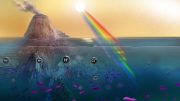
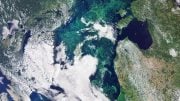
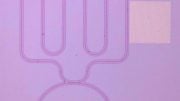


Be the first to comment on "Year of the Quiet Ocean: Emerging Hydrophone Listening Network Will Study Seas Uniquely Quieted by COVID Pandemic"